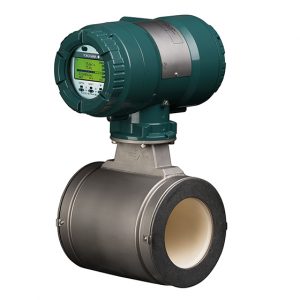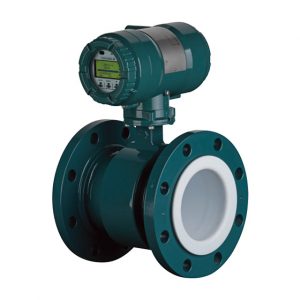Induktiva flödesmätare | Magnetisk flödesmätare | Mag-rör
Magnetiska flödesmätare, ofta kallade MAG-rör, utnyttjar Faradays lag för att mäta flödet i ledande vätskor. Dessa flödesmätare är särskilt lämpade för applikationer inom vatten och avloppshantering, livsmedelsproduktion och kemisk industri, där de levererar hög precision och tillförlitlighet. MAG-rör är idealiska för processer som kräver minimalt underhåll och erbjuder en lång livslängd även i krävande miljöer.
Mer information
Vad är en induktiv flödesmätare (elektromagnetisk flödesmätare)?
En induktiv flödesmätare – ofta kallad elektromagnetisk flödesmätare – är ett instrument som används för att mäta volymflödet av elektriskt ledande vätskor i ett rör. Den bygger på Faradays induktionslag och är särskilt användbar i applikationer där andra mättekniker har svårt att prestera, exempelvis vid smutsiga, viskösa eller aggressiva vätskor.
Magnetisk flödesmätning vs induktiva flödesmätare – vad är skillnaden?
I praktiken finns det ingen teknisk skillnad – det handlar om två olika benämningar på samma mätteknik.
- "Magnetisk flödesmätning" är ett generellt begrepp som syftar på principen där ett magnetfält används för att mäta flödet av en ledande vätska.
- "Induktiv flödesmätare" eller "elektromagnetisk flödesmätare" är benämningen på själva mätinstrumentet som använder denna princip.
Båda bygger på Faradays induktionslag, där en spänning induceras i en ledande vätska när den rör sig genom ett magnetfält. Denna spänning mäts och omvandlas till ett exakt flödesvärde.
Sammanfattning:
Term |
Vad det betyder |
Magnetisk flödesmätning |
Själva principen för hur mätningen sker |
Induktiv flödesmätare |
Det instrument som använder principen för att mäta |
Hur fungerar en induktiv flödesmätare (elektromagnetisk flödesmätare)?
En induktiv flödesmätare fungerar genom att skapa ett magnetfält vinkelrätt mot vätskeflödet. När en ledande vätska passerar genom detta magnetfält induceras en spänning (en elektrisk signal) som är proportionell mot vätskans flödeshastighet. Elektroder placerade i rörets väggar registrerar denna spänning, och instrumentet räknar sedan ut volymflödet baserat på kända parametrar som rörets tvärsnittsarea och vätskans hastighet.
Vad skiljer magnetisk flödesmätning från andra mättekniker?
Det som särskiljer magnetisk flödesmätare är:
- Krav på elektriskt ledande vätskor: De fungerar endast med vätskor som har en viss ledningsförmåga (t.ex. vatten med salter, syror, slam). De är inte lämpade för icke-ledande vätskor som olja eller destillerat vatten.
- Inga rörliga delar: Till skillnad från t.ex. turbinmätare eller vinghjulsmätare har induktiva flödesmätare inga mekaniska delar som slits, vilket minimerar underhåll.
- Hög noggrannhet och repeterbarhet: De är mycket exakta även vid varierande flöden eller med partikelförorenade vätskor.
- Ej beroende av flödesprofil: De påverkas mindre av turbulens och tryckvariationer jämfört med t.ex. differenstryckmätare.

























